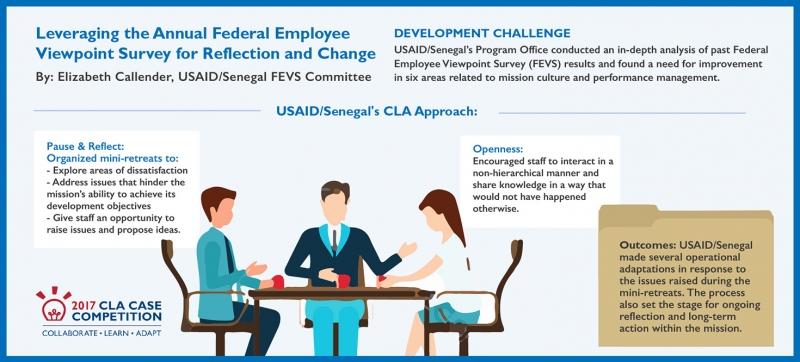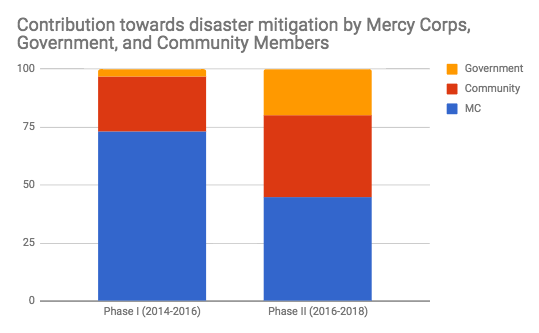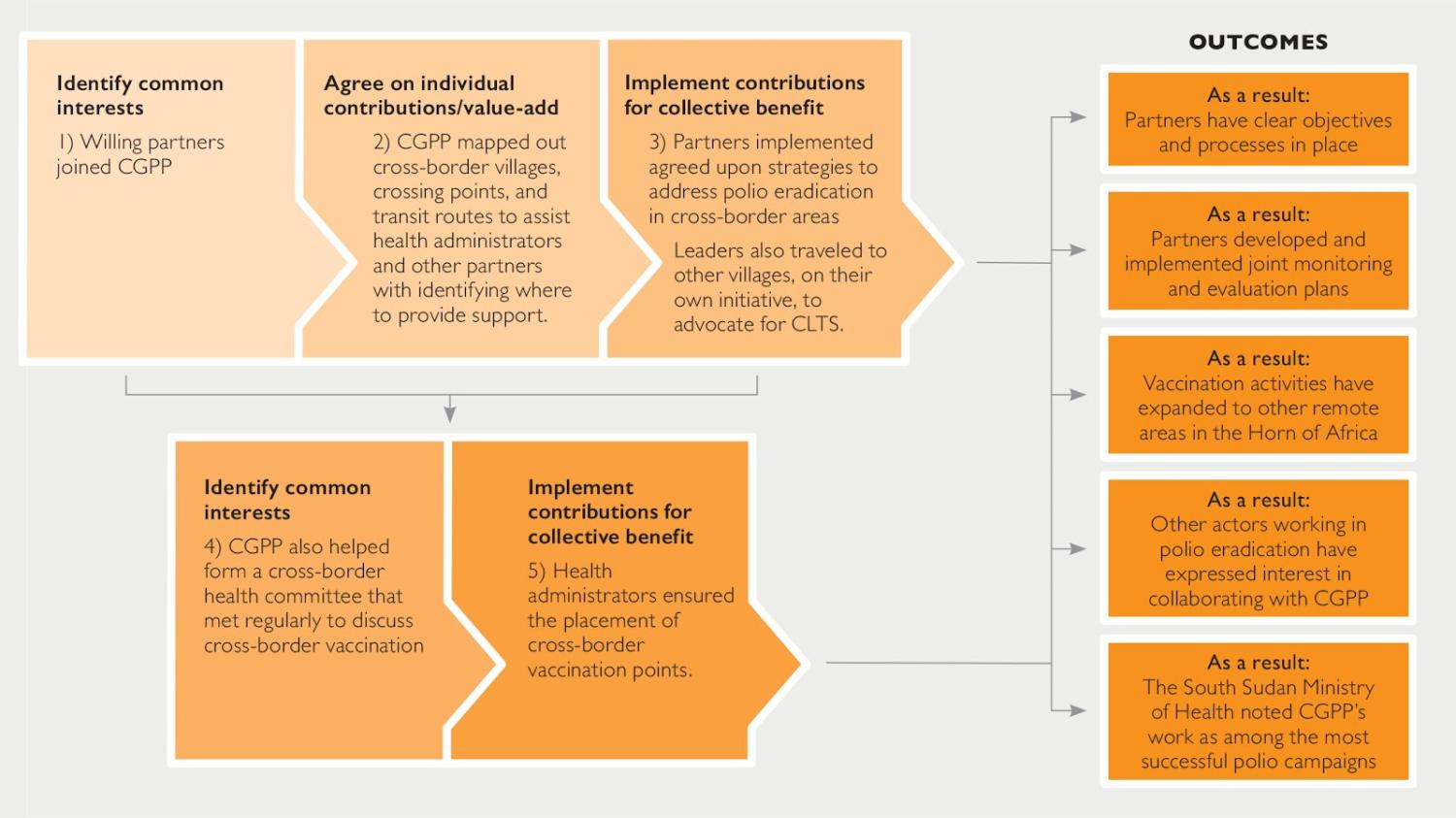Three (Evidence-Based) Reasons You Should Invest in Collaborating, Learning, and Adapting
This blog post was written by Monalisa Salib with contributions from Katherine Haugh, Amy Leo, Kristin Lindell, and Ilana Shapiro, PhD.
We are constantly making tough choices about how to allocate our staff and financial resources, and for many implementing partners, this summer will be crunch time when it comes to budgeting for fiscal year 2019. Whether you find yourself flush or strapped for cash and staff, it’s an important time to consider: what do I hope to achieve this upcoming year? How can investments in internal and external collaboration, organizational learning, and adaptive management help me get there?
If you find yourself needing some evidence to support that investment in collaborating, learning, and adapting (CLA), we hope these three evidence-based reasons convince you to invest or arm you with the evidence you need to advocate with decision-makers in your organization. (And for ideas on what those investments could be - they don’t always require money - see this blog for inspiration.)
1. Teams that consistently collaborate, learn, and adapt are more likely to have staff that feel empowered, engaged, and satisfied, all of which are associated with better performance.
A growing body of evidence from both private and public sector organizations recognizes that having a strong organizational learning culture increases empowerment and a sense of autonomy, which drive high levels of commitment and employee retention. Specific to the USAID context, a 2017 analysis of more than 3,000 USAID employee responses to the Federal Employee Viewpoint Survey (FEVS) across 62 missions found strong, positive relationships between CLA and indicators of organizational effectiveness including employee engagement, empowerment, satisfaction, and perceived organizational effectiveness. These findings fit within a growing body of empirical research that recognizes employee engagement and empowerment as critical to successful organizational performance (GAO, 2015; OPM, 2016; Fernandez & Moldogaziev, 2013; Dizgah, et.al, 2011; Ugboro & Obeng, 2002).
Intuitively understanding this link, USAID/Senegal used collaborating, learning, and adapting approaches to reflect on their FEVS scores and determine actions that would improve staff morale and the mission’s organizational culture. CLA approaches included conducting an analysis of FEVS results, holding mini retreats to discuss and analyze organizational challenges, and collaboratively determining areas for organizational improvement.

2. Teams that collaborate proactively with local stakeholders foster local ownership and achieve better development results.
A recent study analyzing about 10,000 development projects found that aid agencies achieve better results when using bottom-up approaches that empower frontline workers and organizations to make decisions using their local knowledge and relationships. The study finds that we are more likely to miss the mark on our development goals when we lead with a headquarters-driven, top-down management approach. While some may perceive that bottom-up approaches incur more risk due to a loss of centralized control, the study demonstrates the opposite: in most scenarios, top-down fails more often. Why? Because overly prescriptive rules and controls meant to curtail bad behavior can also curtail good behavior, making it difficult for staff to apply locally relevant knowledge and adapt programs (i.e., “navigate by judgment”).
CLA approaches, as demonstrated by our 2015 CLA Case Competition analysis, support the need for bottom-up management, creating local engagement that leads to local ownership, and ultimately, improved development outcomes.
One such example comes from a recent study (soon to be released) by Mercy Corps under the CLA Initiative for Measurement (or CLAIM) Learning Network. They found that teams in Nepal and Timor Leste that intentionally collaborated with key stakeholders and learned from implementation were able to intentionally adapt their programs, resulting in improved “adaptive margins” (i.e., benefits that would likely not have occurred had the team not integrated CLA into their work).
One example from Nepal stands out, demonstrating how adaptive management supports local local ownership and greater self-reliance. The story (soon to be published on Learning Lab) begins with Mercy Corps staff investing in developing strong relationships with government and NGO partners. Because of these relationships, the team became aware of local government funding and planning cycles, creating an opportunity to link Community Disaster Management Committees (CDMCs) they supported to more consistent and sustainable government funding. The team coached the CDMCs on how to engage with government counterparts and submit proposals for funding, resulting in CDMCs now getting the majority of their funding from local government sources (as opposed to Mercy Corps). Had this collaboration not been built in, staff believed that funding for CDMCs would likely disappear once implementation ends. Now communities have access to more sustainable funding and local government is supportive of the mission and role of CDMCs.

Our literature review supports this kind of approach that is embedded in local contexts and negotiated and delivered by local stakeholders. However, this type of external collaboration is not without its challenges, and requires investments in relationship building, managing staff turnover and transitions to avoid disrupting relationships, and flexible contract arrangements that are easier for local entities to manage. These factors can make locally-led development difficult to carry out in practice.
3. Teams that collaborate with other donors, implementers, and stakeholders leverage resources beyond what they would have been able to provide on their own.
We know from our literature review that collaboration is not a panacea - too much of it without a clear strategy can be counterproductive, leading to wasted time, high interaction costs, and slow decision-making. But when done well, with the right purpose, appropriate stakeholders, and efficient coordination, our analysis of the 2015 CLA case competition entries indicates that it leverages resources from various actors beyond what would have been possible for any one actor.
One example comes from an activity in the Horn of Africa to combat the spread of polio that began in 2013. To address the complex crisis, the implementer, CORE Group, employed a Secretariat Model for collaboration, which convened civil society, in-country and international actors like UNICEF and the World Health Organization, to coordinate efforts to stop the spread of poliovirus in cross-border areas. The diagram below describes how this collaboration, based on the respective value-add of each stakeholder, produced positive outcomes, including expanding vaccination activities to other remote areas in the Horn of Africa.
FIGURE 1: Collaboration leverages resources for collective benefit in the CORE Group Polio Activity

From this evidence, we see that investing in CLA yields results. But let’s ask ourselves as we make upcoming resource allocation choices, are we willing to invest? And, if we know that these CLA approaches make us more effective, how can we build them into our requests, solicitations, proposals, and throughout planning and implementation? For tools and resources that can help you do that, see the CLA Toolkit.
We’d love to hear more from you on whether this type of evidence is useful in helping you think through your resource allocation choices, or any other evidence you have that points to a need (or lack thereof) for further investments in CLA.



